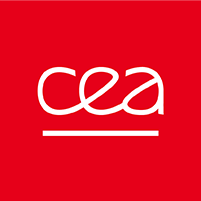Jobs
All our offers
-
PostDoc
Design of in-memory high-dimensional-computing system
Conventional von Neumann architecture faces many challenges in dealing with data-intensive artificial intelligence tasks efficiently due to huge amounts of data movement between physically separated data computing and storage units. Novel computing-in-memory (CIM) architecture implements data processing and storage in the same place, and thus can be much more energy-efficient than state-of-the-art von Neumann architecture....
-
PostDoc
Development of innovative metal contacts for 2D-material field-effect-transistors
Further scaling of Si-based devices below 10nm gate length is becoming challenging due to the control of thin channel thickness. For gate length smaller than 10nm, sub-5nm thick Si channel is required. However, the process-induced Si consumption and the reduction of carrier mobility in ultrathin Si layer can limit the channel thickness scaling. Today, the...
-
PostDoc
Optimization of Li metal/electrolyte for the next generation of all-solid-state battery
CEA Tech Nouvelle-Aquitaine, created in 2013, set up a new laboratory, since more than two years, focused on both the development of materials and the high throughput screening to accelerate the discovery of materials for the next generations of Li-ion batteries. For that, the CEA Tech Nouvelle-Aquitaine acquires different vacuum deposition equipment (sputtering, evaporation, atomic...
-
PostDoc
Quantum dot auto-tuning assisted by physics-informed neural networks
Quantum computers hold great promise for advancing science, technology, and society by solving problems beyond classical computersapos; capabilities. One of the most promising quantum bit (qubit) technologies are spin qubits, based on quantum dots (QDs) that leverage the great maturity and scalability of semiconductor technologies. However, scaling up the number of spin qubits requires overcoming...
-
PostDoc
Advanced reconstruction methods for cryo-electron tomography of biological samples
Cryo-electron tomography (CET) is a powerful technique for the 3D structural analysis of biological samples in their near-native state. CET has seen remarkable advances in instrumentation in the last decade but the classical weighted back-projection (WBP) remains by far the standard CET reconstruction method. Due to radiation damage and the limited tilt range within the...
-
PostDoc
Design and development of a modular high-side test bench for application validation of Grand Gap components
Wide bandgap transistors (GaN, SiC) play a key role in power electronics, but their industrial integration remains hampered by implementation difficulties. The high-side component, within a bridge arm structure, is particularly sensitive to voltage and current transients, which are highly dependent on routing, topology, and switching modes (ZVS, ZCS). Its floating nature makes measurements complex...
-
PostDoc
Analysis of Gas Effluents for More Eco-Responsible Plasma Etching Processes
Traditionally used fluorinated gases, such as CF4 and C4F8, exhibit extremely high Global Warming Potentials (GWPs), significantly contributing to climate change. To address these environmental challenges, the project aims to promote the use of alternative low-GWP gases in combination with efficient exhaust abatement systems at the reactor outlet, while maintaining high-performance plasma etching processes. In...
-
PostDoc
Tools and diagnostic methods for the reuse of electronic components
The Autonomy and Sensor Integration Laboratory (LAIC) at CEA-Leti has the primary mission of developing sensor systems for the digitalization of systems. The teamapos;s activities are at the interface of hardware (electronics, optronics, semiconductors), software (artificial intelligence, signal processing), and systems (electronic architecture, mechatronics, multiphysics modeling). In a context of exponential growth in electronics and...




